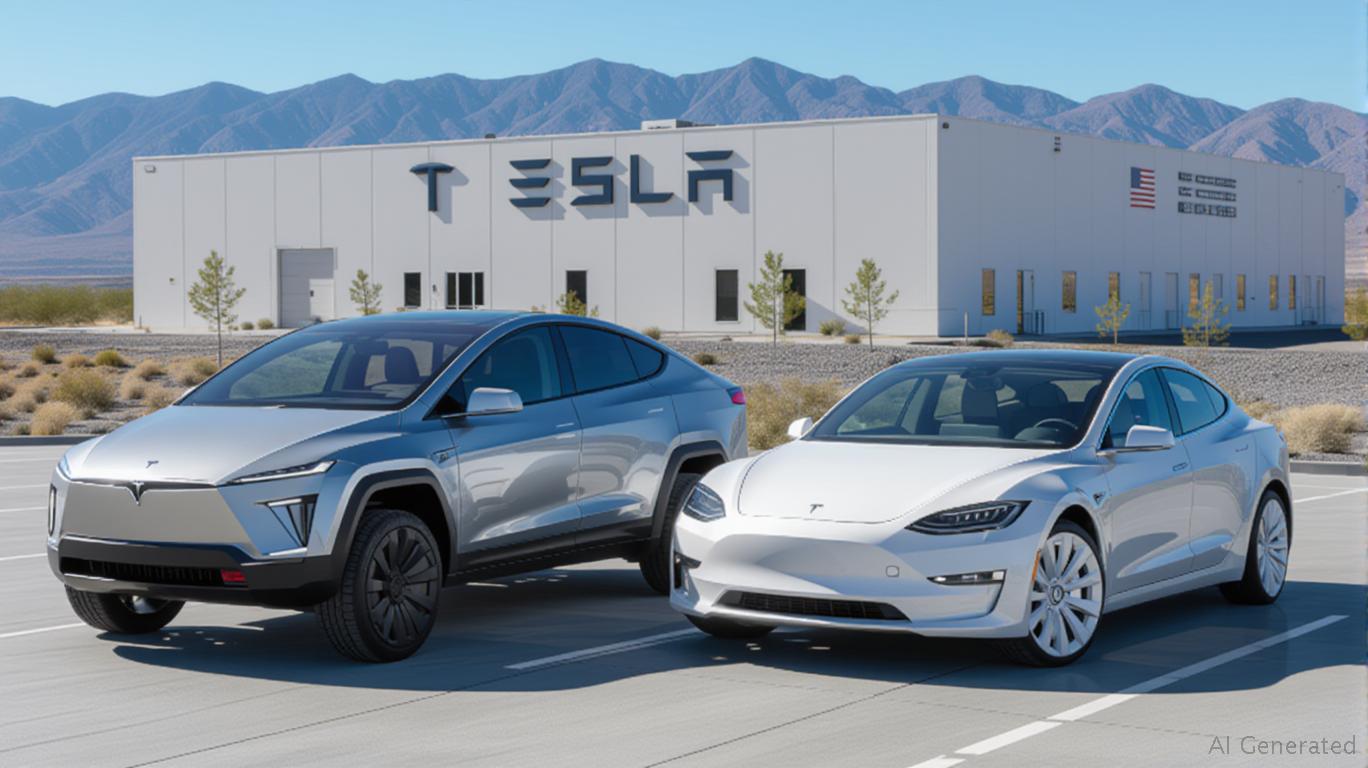The electric vehicle (EV) revolution is as much a geopolitical battle as a technological one, and Tesla finds itself at the epicenter. From U.S.-Canada tariff wars to China’s regulatory maze, the company’s ability to pivot and innovate will determine its long-term dominance. Here’s why Tesla remains a buy despite near-term turbulence—and the catalysts that could supercharge its trajectory.

Tariff Tensions: A Double-Edged Sword
The U.S.-Canada trade dispute has become a microcosm of Tesla’s global challenges. Canada’s freeze of Tesla rebate payments—totaling CAD $43 million—and exclusion from future incentive programs underscores the geopolitical risks of cross-border EV manufacturing. U.S. tariffs on Canadian aluminum and steel, critical for EV production, have pressured Canadian automakers like Stellantis, but Tesla’s U.S. dominance remains intact. In fact, Tesla’s North American sales grew 11% in Q2 2025, buoyed by IRA tax credits and its Texas and Nevada Gigafactories.
However, the broader trade war risks exposing Tesla to retaliatory tariffs. Canada’s threat to impose duties on U.S. automakers could disrupt supply chains, but Tesla’s vertical integration—controlling battery production and software—buffers it against some volatility. The July 2025 U.S.-Canada trade deadline looms as a key inflection point. A resolution could unlock smoother cross-border EV logistics, benefiting Tesla’s Model Y and Cybertruck lines.
BYD’s Blitz: Tesla’s Most Formidable Rival
BYD’s price-cutting juggernaut is reshaping global EV markets. In Europe, BYD outsold Tesla in April 2025 for the first time, leveraging its Hungary plant to sidestep EU tariffs on Chinese imports. Its £18,650 Seagull model targets mass-market buyers, while Tesla’s premium positioning struggles in regions like China, where sales fell 27.9% year-over-year in May 2025.
Yet Tesla retains critical advantages: its Full Self-Driving (FSD) system and AI prowess. BYD’s premium push—via sub-brands like Denza—remains unproven, and its gross margins have shrunk to 20% due to overcapacity. Tesla’s robotaxi vision, set to debut in Austin by June 2025, could carve out a high-margin adjacency. Cathie Wood’s $2,600 price target (a 900% rise from early 2025 levels) hinges on this bet.
Regulatory Battles: FSD in China and Beyond
Tesla’s FSD rollout in China, delayed by Beijing’s strict data localization laws, took a critical step forward in Q2 2025. Partnering with Baidu to train its vision-only system on local road data and renaming it “Intelligent Assisted Driving” (to comply with marketing restrictions) signals adaptability. While Huawei and Nio’s LiDAR-based systems loom as threats, Tesla’s cost-efficient AI approach could win over cost-sensitive buyers.
European regulators, meanwhile, remain skeptical of Musk’s leadership. The EU’s 17.4% countervailing duty on Chinese EVs has spurred Tesla to accelerate its Hungary plant, but sales in the region dipped 13% in Q1 2025. The challenge? Balancing innovation with compliance in markets where “tech nationalism” is rising.
Musk’s Double-Edged Sword
Elon Musk’s polarizing role as both Tesla’s visionary and a political lightning rod complicates the narrative. His White House advisory role, dubbed the “DOGE office,” sparked boycotts and brand damage. Yet Musk’s refocusing on Tesla’s robotaxi and Optimus robotics—a goal of “millions annually by 2030”—suggests a strategic recalibration. Delaware’s SB 21 reforms, which reduce Musk’s legal exposure as a non-controlling shareholder (per new definitions), also shield Tesla from governance lawsuits.
The Catalysts to Watch
- FSD Approval in China: A green light by late 2025 could unlock 30% of Tesla’s revenue growth, given China’s 20% global EV market share.
- Robotaxi Launch in Austin: A successful pilot could validate the $2,600 price target, as Tesla’s “fleet as a service” model mirrors Airbnb’s scalability.
- Delaware Legal Reforms: SB 21’s protections may deter shareholder lawsuits, freeing capital for R&D.
Risks and Reality Checks
- Execution Risk: Tesla’s Q1 2025 net income fell 71% to $409 million amid AI overinvestment.
- BYD’s Momentum: Its global sales rose 59.8% in Q1 2025, versus Tesla’s 13% decline.
- Musk’s Distraction: His political entanglements—like the “Big Beautiful Bill” feud—could divert focus.
Investment Thesis: Buy the Dip, But Stay Vigilant
Tesla’s stock has cratered 27% year-to-date, pricing in pessimism about its robotaxi ambitions and BYD’s rise. However, the long-term case remains intact: Tesla’s AI stack, FSD data moat, and first-mover advantage in autonomous driving give it an edge over rivals.
Recommendation: Accumulate Tesla on dips below $200, with a 12–18-month horizon. Key triggers for a rally include:
– FSD approval in China by Q4 2025.
– Robotaxi revenue contributions hitting 10% of gross profit by 2026.
– A U.S.-Canada trade deal reducing tariff-related costs.
While BYD and regulatory headwinds are real, Tesla’s blend of technological leadership and Musk’s relentless vision positions it to dominate the EV era’s next phase. The road is bumpy, but the destination—robotaxis and AI everywhere—justifies the ride.








